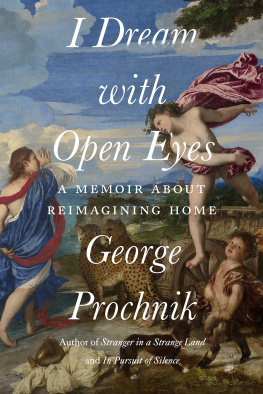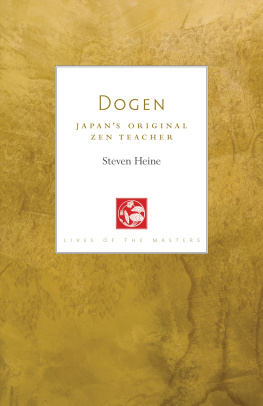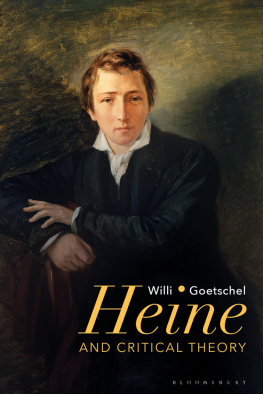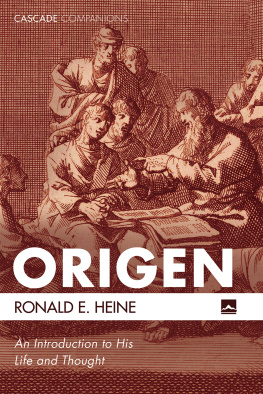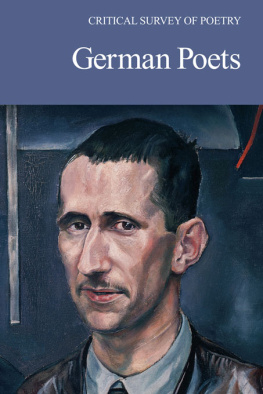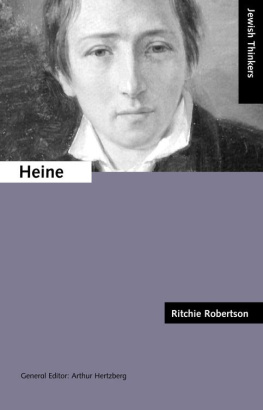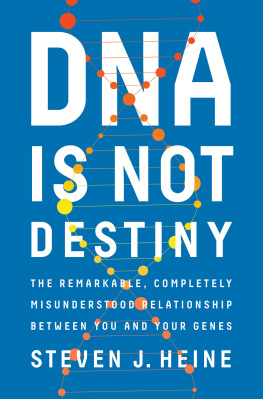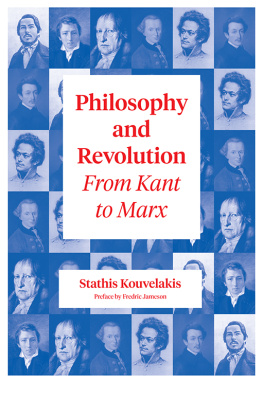HEINRICH HEINE
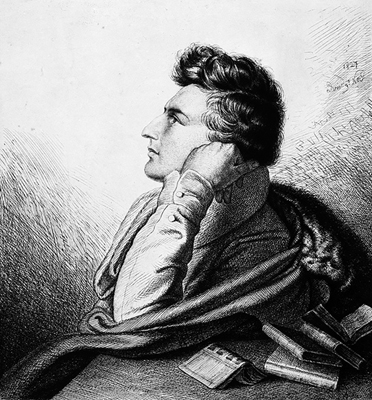
Heinrich Heine
Writing the Revolution

GEORGE PROCHNIK

Jewish Lives is a registered trademark of the Leon D. Black Foundation.
Copyright 2020 by George Prochnik.
All rights reserved.
This book may not be reproduced, in whole or in part, including illustrations, in any form (beyond that copying permitted by Sections 107 and 108 of the U.S. Copyright Law and except by reviewers for the public press), without written permission from the publishers.
Yale University Press books may be purchased in quantity for educational, business, or promotional use. For information, please e-mail (U.K. office).
Frontispiece: Ludwig Emil Grimm, Portrait of Heinrich Heine, 1827. Etching (228 191 mm). Rijksmuseum, Amsterdam (Wikimedia Commons/Public Domain).
Set in Janson Oldstyle type by Integrated Publishing Solutions.
Printed in the United States of America.
Library of Congress Control Number: 2020936895
ISBN 978-0-300-23654-5 (hardcover : alk. paper)
A catalogue record for this book is available from the British Library.
This paper meets the requirements of ANSI/NISO Z39.48-1992
(Permanence of Paper).
10 9 8 7 6 5 4 3 2 1
For Rebecca
CONTENTS
HEINRICH HEINE

Chapter One
W HATS LIFE without glory, blazing love affairs, and apple tarts?
Thats to say, what is life without song and true liberation for all?
Heinrich Heine at thirteen, diminutive and dashing with wavy chestnut hair and a passion for play, charged into the crowd beneath the linden trees of Dsseldorfs palace garden. Napoleon and his cortege were riding down the avenue. The emperors triumphs drummed through his imagination as he struggled for a view: fiery battles in which the general raised aloft the flag adorned with Jupiters eagles; proclamations bestowing equality on all the worlds peoples. Now Napoleons revolutionary vision would ignite Dsseldorf. The torpid, pretty riverside hamlet of sixteen thousand souls, where Heine and his sister once hid under hay in a chicken coop, clucking and crowing to confuse the passersby, was receiving the greatest man in the world. On a contemporary map, the town is just a fortified blister attached to the lumpy blue hose of the Rhine, surrounded by fields and loose woody patches. Wreathed in pipe and chimney smoke, with irregular streets, brick houses, errant dogs, a picture gallery, and a handful of silk, glass, vinegar, and sugar manufactories, it was a pleasant place from which to dream of waking.
When Heine wrote about that day in November 1811, he switched the scene to spring and made it a tragicomic stage show of Christs entry to Jerusalem. Hosannah! The Emperor! Trees bowed as the general rode by. Light rays trembled with nervous curiosity. Napoleons hand of sunny marble held the reins, Heine noted, while his countenance resembled an antique bust. I have loved only the dead and statues, he remarked elsewhere.
Heine never lost his allegiance to Napoleon, that ghost colossus, even when he saw through his pretenses and took the measure of his ego. He would not relinquish the idea that without our heroes and our gods we wither. Or we deify money. Or we crown the mob. Even after weve seen through the dazzle to the little man in dress-up clothes, we cant afford to shed all our starry-eyed enthusiasms. Theyre too tangled with the sheer love of being alive. Red life is boiling in my veins, the earth is quivering under my feet, I clasp trees and marble statues with ardent love, and they come to life in my embrace, Heine vowed. He disdained the priests promise of a second life. There was plenty to experience hereincluding the eternity of the past, which he could conquer by living backward through his predecessors.
In Napoleon, Heine found the personification of the French Revolution, which was itself the overture to world revolution, a term Heine coined to represent the gigantic battle of the disinherited and the inheritors of fortune. In that struggle there would be no question of nationality or religion, for there will be... but one religion, that of happiness in this life. Such was Heines contention, from youth on through his final, devastating illness: there is no real justice or freedom without joy. And what did joy consist in? Erotic delight. Plenty of money. Beauty. Coruscating wit. Artistic jags. Fair laws. No idiotic censorship. High-spirited fun and shameless comedy. It wasnt all that complicated.
Heine wasnt greedy. He lived most of his adult life in cramped, drab flats with few belongings, complaining only when things got too noisy. But his prose and poetry glow with the desire to revolutionize society in a manner that will give more or less everything to everyone. The Great Man gave palpable form to that ideal potential of the community at largesome sublime order just the other side of this jangly animal carnival in which we dance and wrestle now.
I have gone through every phase of modern thought and feeling, he told a visitor in 1852, four years before his death. I have been Werther, Ren, Lara, Faust, Mephistopheles.... But I have never wavered in my faith in the Emperor. Heine was always changing into others, or channeling their voices. The day Napoleon came to Dsseldorf, he envied the white pony the emperor straddled with such easepatted by the hand that tamed the many-headed monster of anarchy and brought order to the dueling nations. Extraordinary characters trigger a moral thunderstorm in the uncallused minds of young people akin to the effect that meteorological ones have on cats, Heine wrote. Napoleon smiled benevolently at the crowd; but all he had to do was whistle and the clergy fell dumb, or Prussia ceased to exist. Everyone knew it was against the law to ride down the central avenue of the Hofgartendoing so would incur a sharp fine. But Napoleon advanced straight down the path and no one budged to stop him. His eyes were clear as heaven, absorbing everything on earth simultaneously.
Not that absolute power meant bliss. The future wars Napoleon would have to fight were carved across his brow like hieroglyphics, and every so often his forehead twitched. Each time that happened, tremendous, creative thoughts were taking place behind the emperors furrows. Any one of which could supply a German writer with enough material to occupy him for the remainder of his life, Heine argued.
Thats another reason he could never surrender faith in Napoleon. The artist and the emperor were locked in an uncanny symbiosis. Napoleon was the man of the idea, the idea become man, as Heine stated in a letter. And he himself was the idea become lyric, the kind of musical picture-writing he attributed to Paganini in a sequence from his novella Florentine Nights that depicts the violinist as sorcerer: spinning myriad, disarming stories around his audience as he runs his bow across the strings; producing tones that kiss, then swirl away again before melting together and becoming lost inside the listener. Tones filled with melodious torments, into which the obbligato-goat-laughter comes bleating in, heralding kaleidoscopic flashes of the apocalypse that dissolve into a sweeping chorus where all Creation performs the artists bidding; prefiguring the advent of a song which no ear has heard.
Next page

